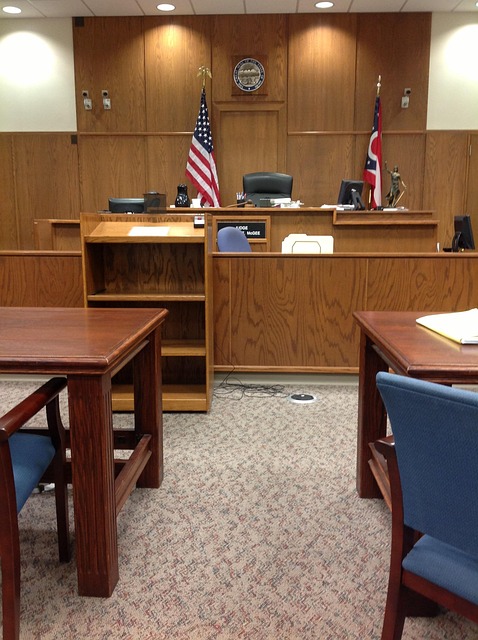Trademark law protects unique commercial identifiers, with distinctiveness crucial for legal protection. Ignoring these regulations invites severe consequences, including civil and criminal penalties for infringement. Unauthorized use leads to reputation damage, financial losses, and legal proceedings, with evidence gathering as the initial step. Trademark owners have powerful tools, including civil lawsuits and injunctions, resulting in monetary awards and jury trials. The growing impact of white-collar crimes highlights the prominence of trademark enforcement, with severe risks extending beyond financial losses for both businesses and individuals.
In the dynamic landscape of commerce, understanding trademark law is paramount to protect intellectual property. This article delves into the intricacies of criminal law enforcement as it pertains to trademark infringement, exploring key concepts from basic definitions to severe legal consequences. We dissect acts of infringement, examine remedies available to owners, and analyze the broader impact on businesses and individuals. By navigating these topics, we highlight the importance of safeguarding trademarks and the potential legal repercussions for infringers.
- Understanding Trademark Law Basics
- Identifying Acts of Infringement
- Legal Remedies for Trademark Owners
- The Impact on Businesses and Individuals
Understanding Trademark Law Basics

Trademark law is a critical component of intellectual property rights, designed to protect unique commercial identifiers such as names, logos, and symbols. At its core, understanding trademark basics involves grasping the concept of distinctiveness and the legal protections that accompany it. A trademark becomes enforceable once it is used in commerce and meets the criteria for being distinctive, signaling source accountability to consumers.
The legal consequences of trademark infringement can be severe, encompassing both civil and criminal penalties. In a general criminal defense context, individuals or entities found guilty of using another’s trademark without authorization may face charges related to fraud, false advertising, or even white-collar crime, depending on the scale and intent of the infringement. These legal repercussions underscore the importance of adhering to trademark regulations to safeguard not only intellectual property but also consumer trust in respective businesses.
Identifying Acts of Infringement

In the realm of criminal law enforcement, identifying acts of infringement is a meticulous process that forms the foundation for subsequent legal proceedings. Trademark infringement, in particular, involves the unauthorized use of a registered trademark, leading to potential legal consequences for the infringer. This includes damage to the original brand’s reputation and financial losses due to consumer confusion. The first step in the enforcement process is to gather evidence, which may include examining products, marketing materials, and online content to establish a clear violation.
During all stages of the investigative and enforcement process, whether targeting corporate or individual clients, it is crucial to navigate the intricate web of legal definitions and provisions. Understanding the legal consequences of trademark infringement is essential for both prosecutors and defenders, as it dictates the appropriate response and potential penalties, which can range from cease-and-desist orders to substantial monetary fines, depending on the severity of the violation.
Legal Remedies for Trademark Owners

Trademark owners have a range of legal remedies to protect their intellectual property rights from infringement. When a trademark is violated, the owner can take decisive action to safeguard their brand and seek appropriate compensation. This often involves filing a lawsuit against the infringer in civil court, where they may be entitled to various remedies such as injunctions to stop the unauthorized use, damages to cover losses, and profit recovery to account for the infringer’s gains.
The legal consequences of trademark infringement can be severe for wrongdoers. In addition to monetary awards, successful plaintiffs may secure winning challenging defense verdicts, including permanent injunctions to prevent future infringements. Jury trials also play a significant role in these cases, providing a platform for both parties to present their arguments and evidence. Furthermore, given the rise of white-collar and economic crimes, trademark enforcement has become more critical, with courts increasingly recognizing the substantial impact on businesses and the broader economy.
The Impact on Businesses and Individuals

The Legal Consequences of Trademark Infringement can significantly impact both businesses and individuals, with effects reaching far beyond financial losses. When a trademark is illegally used, it not only undermines the original brand’s reputation but also creates confusion in the market. This can lead to a respective business losing its competitive edge, damaging customer loyalty, and potentially facing an unprecedented track record of sales decline.
For individuals, such infringements may result in severe legal repercussions, including civil lawsuits and even criminal charges. Avoiding indictment requires proactive measures to protect intellectual property rights. Businesses must stay vigilant, employing robust trademark monitoring systems and taking swift action against infringers to safeguard their unique identities and maintain a positive public image.
Trademark infringement is a serious matter with significant legal consequences, impacting both businesses and individuals. Understanding the basics of trademark law, knowing how to identify infringements, and being aware of available remedies are crucial steps for any trademark owner. By staying informed about these aspects, including the potential impact on their operations and reputation, businesses can protect their brand identity and take prompt action against infringers. The legal landscape surrounding trademarks is designed to foster a fair marketplace, ensuring that consumers are not misled and that brands maintain their distinctiveness in today’s competitive business environment.






